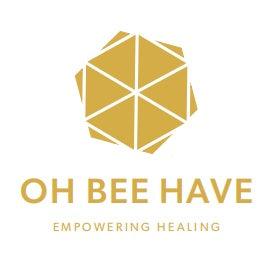I have a curly question for Keryn that I don't think he can answer:
Can you explain why bright plants of primary colours, such as red, orange, yellow and green have potent health benefits for those who eat them but there are not similar benefits from eating plants that are blue, black or brown?
I am going to go deep on this one. I hope you will be able to follow my train of logic? I would first like to define what colour is by saying that light is a photon and has a wavelength and has another name called electromagnetism which is a small part that our eyes can see, but is part of a much bigger spectrum of energy. A photon has no mass and it has no charge but what is it? In my model, a photon of light is a pair of electrons in a super symmetry state where the distance between them is the wavelength. One of the electrons is pointed spin up and the other is pointed spin down. This opposite orientation of the electrons in an inverted symmetry means the changes and poles cancel each other out so there is no mass and no charge but only a distance between them which is known as the wavelength. The interactions between the two electrons cause a right handed spiral as the photon travels at the speed of light.

So sight corresponds to 400-700 nm of electromagnetism. Interestingly, the Balmer series of spectral lines in hydrogen correspond to visible wavelengths.


So colour originates from the movement of electrons within atoms and that movement is triggered by photons of light. Only certain photons can interact with certain electrons because of there wavelength needs to match to the distance between the electrons in the atom. If the wavelengths don't match then the photon carries on without seeing the electrons in the atom.
The wavelengths of light that can interact make the electrons increase in energy and this makes them get further away from the nucleus. The electrons jump back down and release light of that wavelength from the atom. This is the photo-electric effect that Einstein discovered.
In cosmology the spectral lines for each atom correspond to the photo-electric effect. They are also known as Fraunhofer lines, which correspond to black lines in the visual spectrum.

The dark lines are there because electrons have captured that light and sent it elsewhere so they are missing from the spectrum. So what is missing in the spectrum corresponds to what atoms are present and this is used to identify what stars are made of.
So colour is complex. The other part to this question posed by Gary Moller is sight! Now we have two kinds of sight. Conscious observation and intuition. We have been taught that what we see is outside of ourselves and therefore outside of our control.

The human eye. A marvel of evolution.

It evolved over time and things were different previously due to changes in atmospheric conditions.

Changes in oxygen levels in our atmosphere changed what wavelengths of light were available for sight to use.

Light that you are exposed to changes depending on where you live, which is based on a number of factors.

Terrestrial animals and plants have the following types of light available as free sources of energy.

The human has evolved to use light. Blue light is interesting because it is important in aging and this is the area where major changes occur with respect to vision. Light in the eye has been shown to promote melatonin production (sleep hormone) and this is from sunlight in the morning.
However, the orientation of the human retina are pointed inwards so the evolutionary outcome is that vision is inside of you and it is happening within the mind itself an not externally. In fact the primordial eye appears to be much like a pin whole camera. So the light would be upside, back to front and inside out. These concepts can cause people to get a bit woozy.
We have two pin wholes, each pupil acting like a black hole. The interaction of light within this double pin whole system allows quantum entanglement to occur. These are strange concepts but if you consider our biology and how the universe works then the smaller you go the bigger things get when the inverse is determined. I will leave that concept at this stage and now actually answer Gary's question.
Can you explain why bright plants of primary colours, such as red, orange, yellow and green have potent health benefits for those who eat them but there are not similar benefits from eating plants that are blue, black or brown?
So colour corresponds to energy. Red has a lower level of energy than blue.
Blue = 400 nm = 3.09960 eV
Red = 700 nm = 1.77120 eV
Red light boosts cellular energy production in mitochondria. The more efficiently your cells create ATP energy through cellular respiration, the better your body feels and performs. Red and NIR light stimulates mitochondria and works against nitric oxide & oxidative stress that weakens our cells and slows us down. This is the science that is currently suggesting how our bodies use red light.
There is also a biology that works in blue light and that is called photo-fenton chemistry. This is the biology of regeneration within your body as blue light can cause the release of radicals which are a source of paramagnetic electrons and the origin of biological quantum entanglement. Stem cells do not have active mitochondria and therefore obtain their energy from the radical based photo-fenton system that occurs in the biology of apoptosis where the cell undergoes a pre-programmed cell death. This natural cellular death is vital to recycle biological tissue and is part of the normal processes in our bodies.
If we stop this process then we will cause disease in our bodies with the accumulation of damage over time. Biology sits on that knife edge between stability and instability, between symmetry (stability) and asymmetry (instability).
Coloured foods have a composition where the electrons in the atoms, in the molecules in the food cannot absorb or use the colours as a source of energy corresponding to colours that they are. So red foods are using all other colours and therefore the colour of such food has the potential based on its colour to stimulate ATP production in the mitochondria.
Paschen series (Bohr series, n′ = 3)[edit]
Named after the German physicist Friedrich Paschen who first observed them in 1908. The Paschen lines all lie in the infrared band.[11] This series overlaps with the next (Brackett) series, i.e. the shortest line in the Brackett series has a wavelength that falls among the Paschen series. All subsequent series overlap.
| n |
λ, air
(nm) |
|---|---|
| 4 | 1875 |
| 5 | 1282 |
| 6 | 1094 |
| 7 | 1005 |
| 8 | 954.6 |
| ∞ | 820.4 |
| Source:[9] | |
The mitochondrial ultrastructure was similar across species and neuronal regions. The outer and inner membranes were each approximately 7 nm thick. The inner boundary membrane was found to lie close to the outer membrane, with a total thickness across both membranes of approximately 22 nm.

It is interesting that rotation of the ATPase in the mitochondria which is driven by hydrogen ion gradient provides the needed energy to form ATP from ADP and H2O by combining H+ and O2.
So the colour of the vegetable can induce changes in electrons position within an atom. This process is also occurring in your subconscious mind. Bright colours provide more stimulation of the mind as that is where colour is perceived.
The concept of wait and c. Waiting is the conscious mind taking its time to determine what the subconscious mind is up to. As the subconscious mind is working on the principles of physics and the interaction of photons with electrons and the transitions observed by the conscious mind provide sight.
The accumulation of observations provides an increase in asymmetry in atoms within the mind which results in an anatomy of asymmetry within atoms. These asymmetries create instability within the atom resulting in a release of energy and light to return to symmetry. Single atoms are coordinated to neurotransmitters. This light symmetry / asymmetry system within the atom allows storage of light as atomic structures in a process called K+ or electron capture. This process is what the subconscious mind is using to create the observable world and turning light which is symmetrical electrons into structure of atoms where the electrons are asymmetrical. Balance and symmetry and atom stability is returned through the geometry of protons and neutrons being equal within the atom, remembering that beta plus and beta minus radioactive decay allows the release of energy and interchange between protons and neutrons as symmetry partners. I will leave that concept of my SUSY Inversion model for another day also.
There are other concepts to explore like how we obtain energy from food but I will again try to focus on food colours and health. Tomatoes contain lycopene.

The conjugated double bonds are able to capture light but not red light, which is why lycopene is red, right. Mineral can coordinate with the pi bonds. 
So biology works through single atom coordination complexes and happens through electron donation and sharing and forming bonds or pairs of electrons, which I have previously outlined as photons that have wavelengths. Bonds have bond lengths that correspond to certain frequencies of energy and they absorb certain wavelengths of light. Break the bond and you release that energy as light. So coloured foods love binding minerals and doing coordination chemistry.
The consequence is the flow of energy from one atom (mineral) coordinated to another. 90% of the energy is held within the structure of the atom and 10% is released into the environment. There is more to this but just to say that vitality and energy comes from the flow of electrons in biology which is driven by hydrogen and its magical quantum properties. Those properties will be described another day.
So colourful food has the ability to promote energy flow by capturing and releasing light energy due to atom coordination to electron donating groups. If you think the medical profession have any way of controlling this underlying complexity in biology using the current set of pharmaceutical and medical device tools available then I would say let colourful food be your medicine as science has a long way to go. Best relax and enjoy the ride as your biology is based on chemistry, which is based on physics and that changed in the 1930's and the medical profession have not caught up.
Until next time. Take care and OH BEE HAVE! Enjoy you deserve it.



